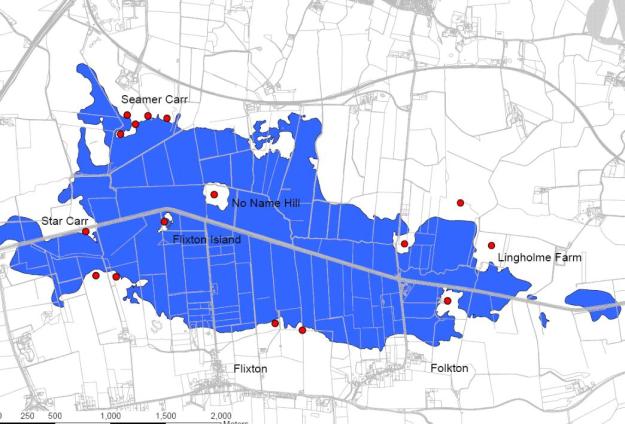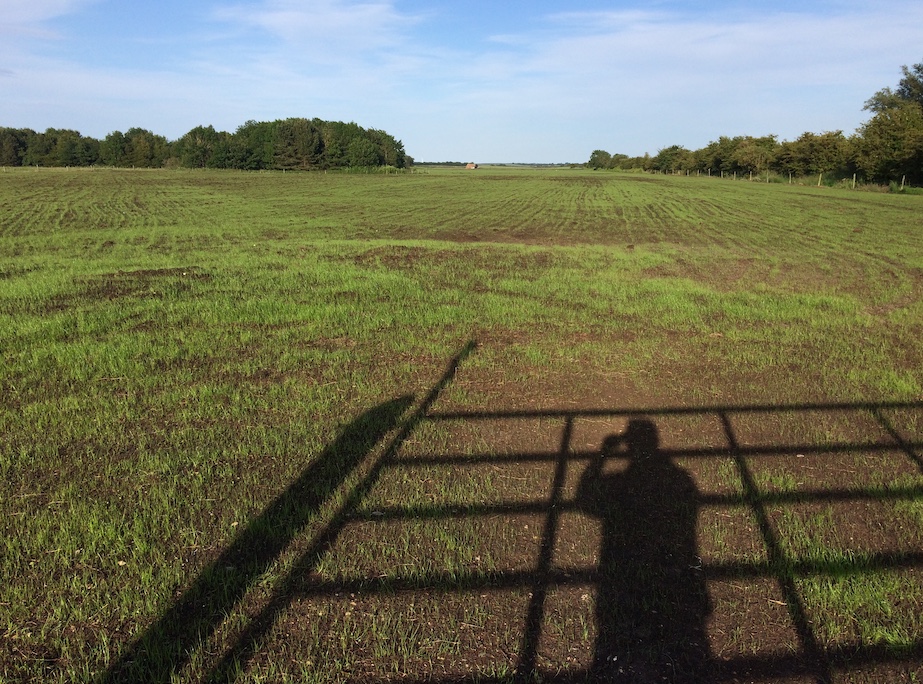Jun-2020
Exploring Yorkshire’s Lost Landscape
At first glance, The Carrs is an unremarkable landscape. The flat fields have more of a resemblance to the Fens of Eastern England than to Yorkshire. But there are secrets hidden beneath the peaty soil of The Carrs. It is home to probably the most important Prehistoric site that you have never heard of. Star Carr.
The Carrs is an area of floodplain running across the Vale of Pickering towards the Yorkshire Wolds. For decades archaeologists have been investigating the shores of the lost Lake Flixton and in particular one location, Star Carr. In 2010 archaeologists from Manchester and York Universities unearthed a structure at Star Carr that was inhabited around 9000BC. Making it the oldest house in Britain, being 11,000 years old!
The dwelling would have been on the shores of the ancient Lake Flixton. The lake was situated in the shallow flat land bounded today by the villages of Flixton and Folkton, the Scarborough to Filey railway line and the A64 at Seamer Carr. According to the Carrs Wetland Project website, Lake Flixton was a series of linked post-glacial lakes which were formed in the Vale of Pickering.

Lake Flixton map produced by York University, c.Star Carr Project
Around 11,00 years ago people lived and fished on the shoreline of Lake Flixton. They made clearings in the surrounding woodland to attract wildlife that they could trap for food. These Middle Stone Age folk were no different from people of today. They were every bit as intelligent as contemporary humans and, if dressed in modern clothing, would be indistinguishable from us. All that separates us is time. A lot of time admittedly!
Of course, the landscape was vastly different from today. Lake Flixton was surrounded by swampy lowland tree cover. Beyond that there was no North Sea. During that period Britain was joined to Europe by Doggerland. A vast area of land beneath what is today the North Sea. The title may well be familiar, as Dogger is a sea area that features in the BBC Radio’s Shipping Forecast and refers to the submerged sandbanks of the Dogger Bank. When our distant ancestors were living on the shores of Lake Flixton, the Dogger Bank would have been high ground on a huge plain leading to, what is today, mainland Europe. The land was lost to the sea around 10,000 years ago, creating what archaeologists from Bradford University have termed ‘Doggerland’. Britain’s own Atlantis.
Although world famous in archaeology circles, Star Carr is relatively unknown to the wider public. Star Carr is a scheduled monument, but its remains are hidden beneath the low lying farming fields of the Carrs. For the casual visitor there is little to see. Unravelling the mystery of this hidden landscape takes a little detective work.
The Yorkshire Museum in York, hosts a permanent exhibition about Star Carr, which it describes as ‘the most significant Mesolithic site in Europe, where people lived over 11,000 years ago’. Items from the site, including bone harpoons, elk antler tools and birch bark rolls, are on show alongside a digital recreation of what Star Carr would have looked like to our ancestors. Scarborough’s Rotunda Museum houses flint tools, animal bones and a stag frontlet which was used as a head-dress. The latter is probably the most fascinating object recovered from the peaty soil of Star Carr. It was thought to have been used by shamans in ritual practices, but no one really knows. Other museums that hold objects from Star Carr include the British Museum in London and the Museum of Archaeology and Anthropology at Cambridge.
Hundreds of years of farming has seen the Carrs extensively drained and today virtually the only water a visitor can see are the long drainage ditches. The almost arrow-straight River Hertford illustrates the changes man has made to the landscape. The Carrs are rich farming land due to peaty nature of the soil, built up by centuries of reed swamp vegetation of the former Lake Flixton bed. It created the flat fenland appearance of the Carrs.
A network of footpaths and bridleways do provide access to The Carrs and offer a tranquil alternative to the often crowded coast and moors. There is wildlife in abundance, particularly birdlife and invertebrates such as dragonflies. The Carrs Wetland Project website has an excellent guide to the area. Whether you are a local or a visitor, why not explore The Carrs this summer?

The Carrs

comment this post